Why Haiti's food system is so hard to fix
Despite billions in international aid after natural disasters, insecurity and lack of basic services leave the country dependent on imported food.
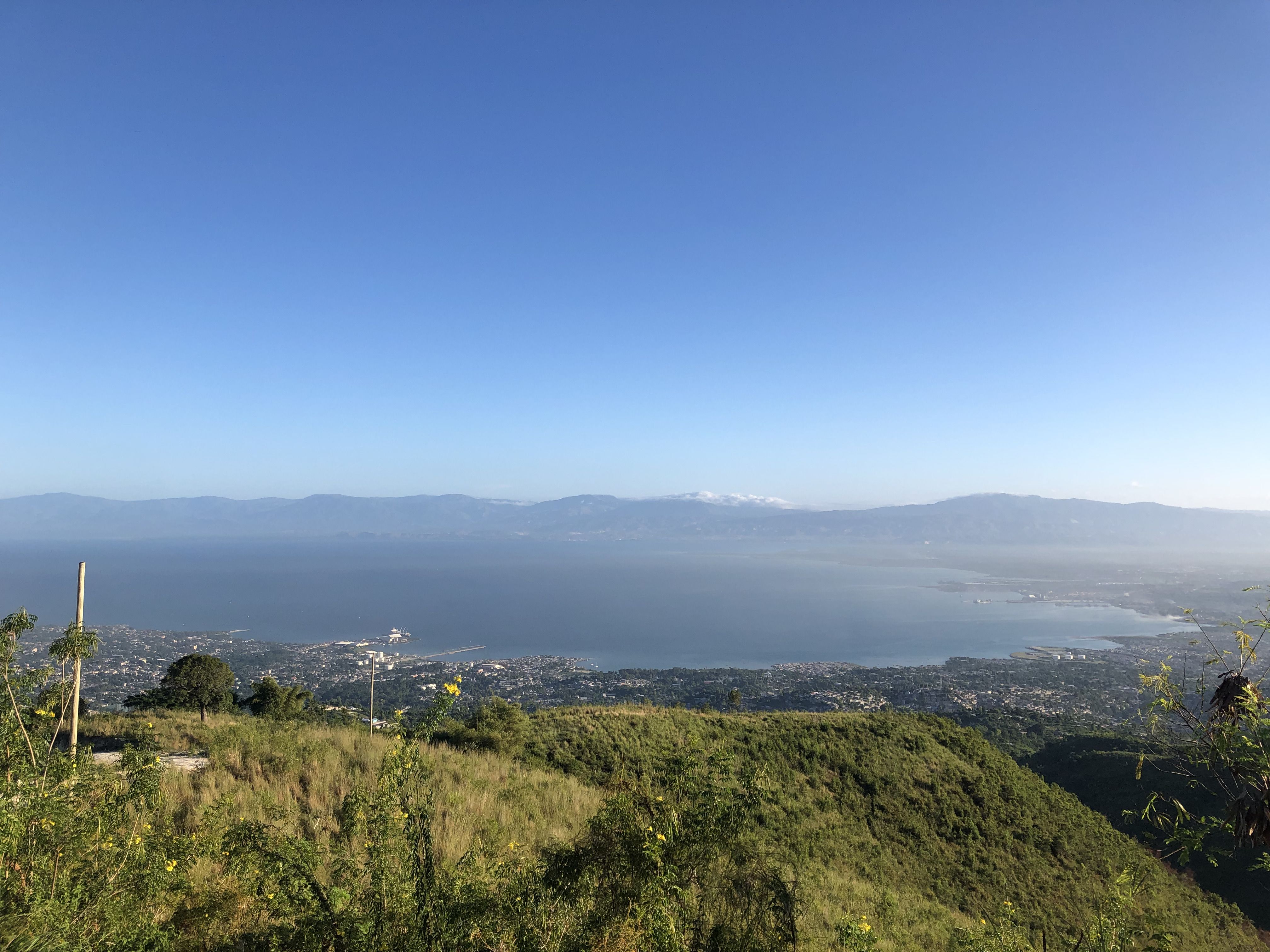
LES CAYES, Haiti — When a 7.2 magnitude earthquake struck Haiti on Aug. 14, tens of thousands of people in the southern peninsula saw their homes destroyed or damaged. Regular economic and agricultural activity was disrupted, leaving an estimated 650,000 people in need of emergency humanitarian assistance, including food.
Relief organizations sprang into action to feed people in hard-hit areas. Hope for Haiti, a U.S.-based nonprofit, collected shelf-stable products such as rice, beans, and cooking oil. It intended to package the items and get them as quickly as possible to the families still vulnerable more than a month after the earthquake.
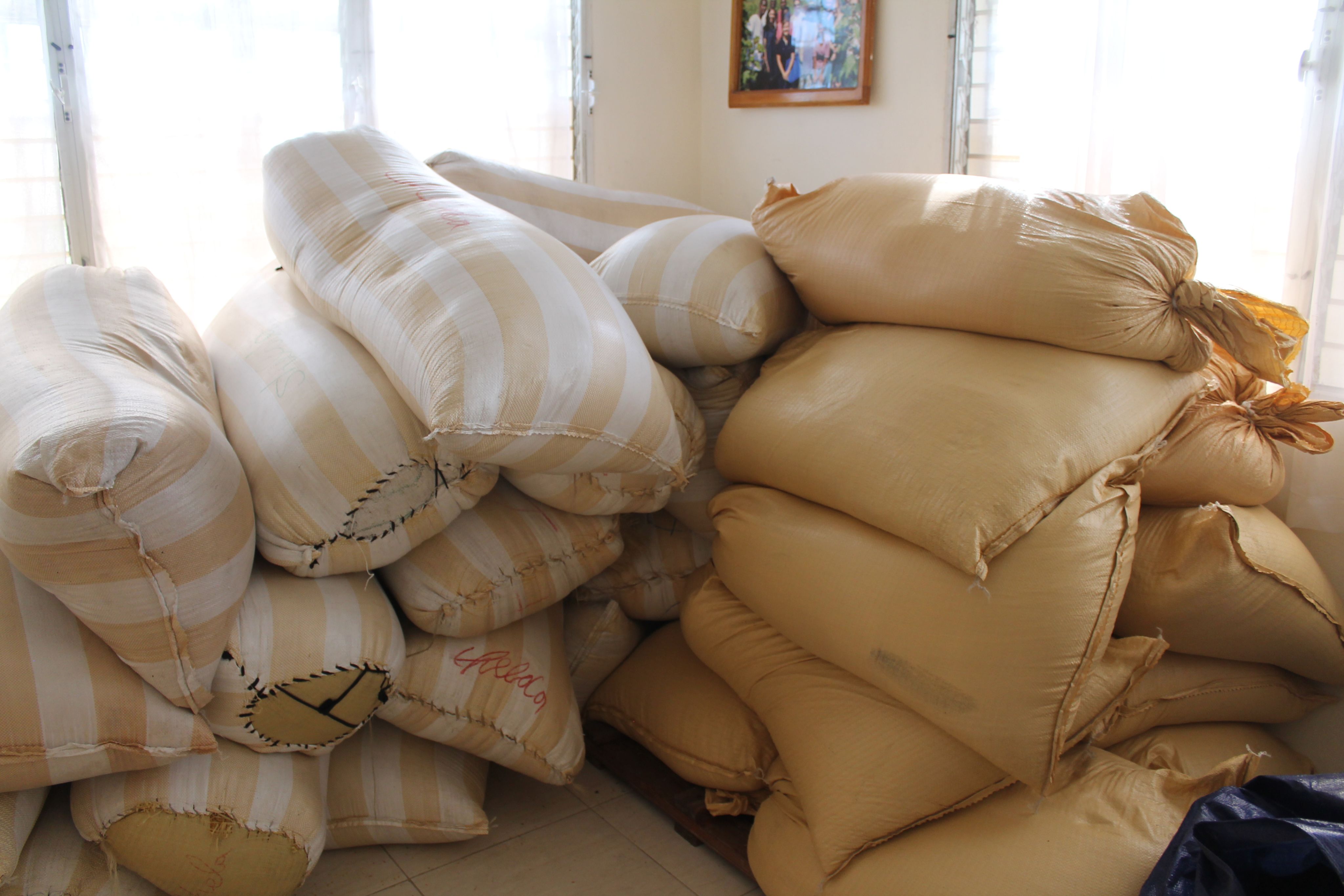
Bags of rice sit in the Hope for Haiti office, waiting to be distributed to hungry families.
Bags of rice sit in the Hope for Haiti office, waiting to be distributed to hungry families.
But weeks later, the goods remained piled up at Hope for Haiti’s office in downtown Les Cayes, stored in a former conference room and under tarps outside. The bags that it needed to package the provisions had been delayed on the main route from Port-au-Prince to the country’s entire southern peninsula — a road that is routinely impassable due to soaring gang activity in an area called Martissant.
Even when not in the throes of natural disaster response, Haiti’s food system — from farmers’ production and transport to markets and consumption — is chronically strained.
“Haiti is a very centralized country where you get almost everything you want from Port-au-Prince,” said Jean Ronald Jocelyn, education program director at Hope for Haiti. “The departments, the localities, they are not really sustainable. They are not self-sufficient.”
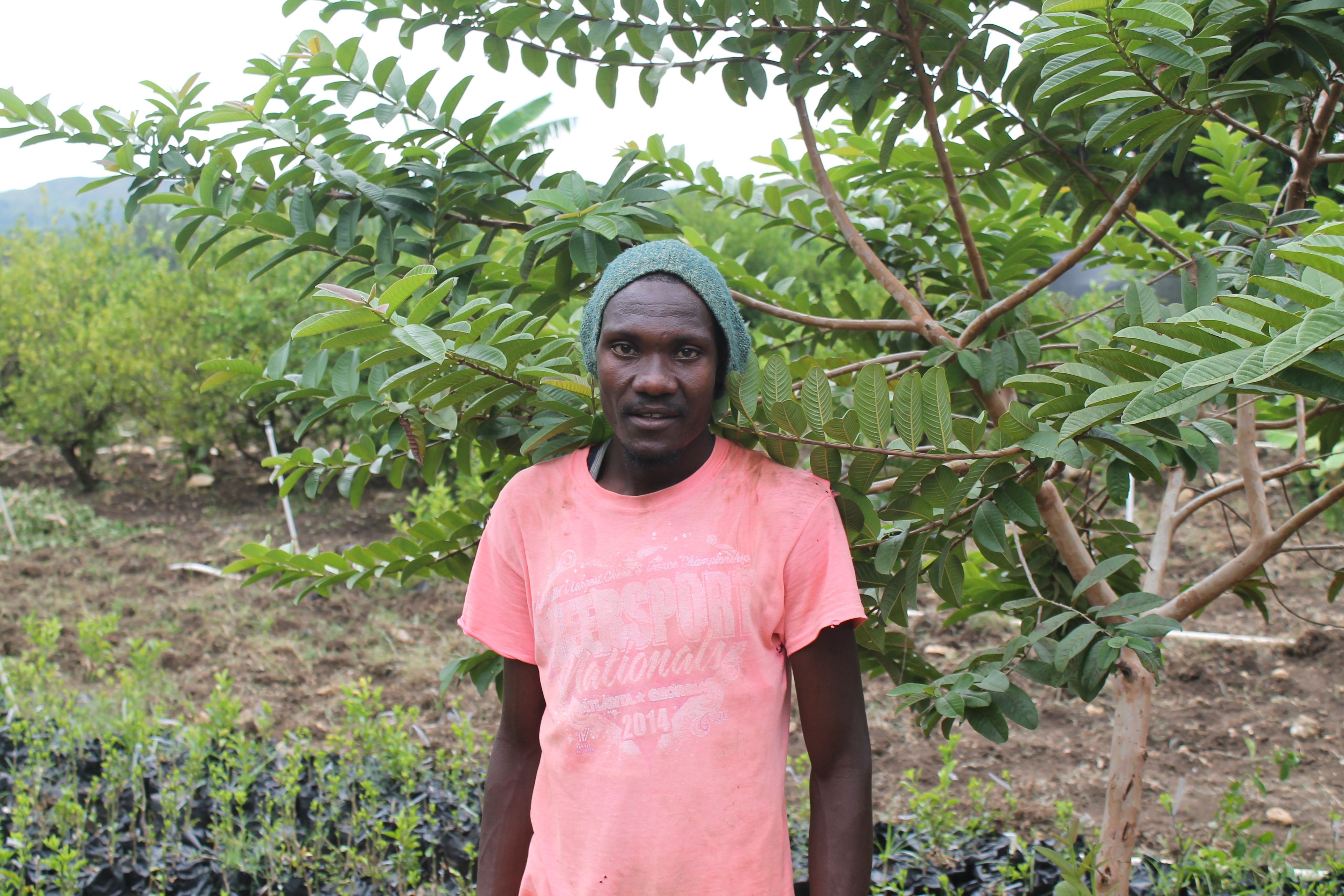
Most farmers in Haiti don't have access to guaranteed markets for their crops, making it difficult for them to plan.
Most farmers in Haiti don't have access to guaranteed markets for their crops, making it difficult for them to plan.
Despite the billions of dollars in international aid for Haiti since the 2010 earthquake, the country’s food system remains in a cycle of dependency on imports, leaving access to a nutritious, affordable diet out of reach for a large portion of the population. Levels of hunger were alarmingly high even before August’s earthquake, and a recent survey found that 4.3 million people face acute food insecurity.
Little has been done to strengthen the food system by a government that is persistently in crisis. It has no ability to maintain security on roadways nor improve basic infrastructure and cold chain capacity that would allow farmers’ goods to move throughout the country without spoiling them.
International aid organizations in Haiti routinely fill the void. But they often do little to domestically source food, support the local food system and its farmers, or build the capacity of local organizations to respond to food crises.
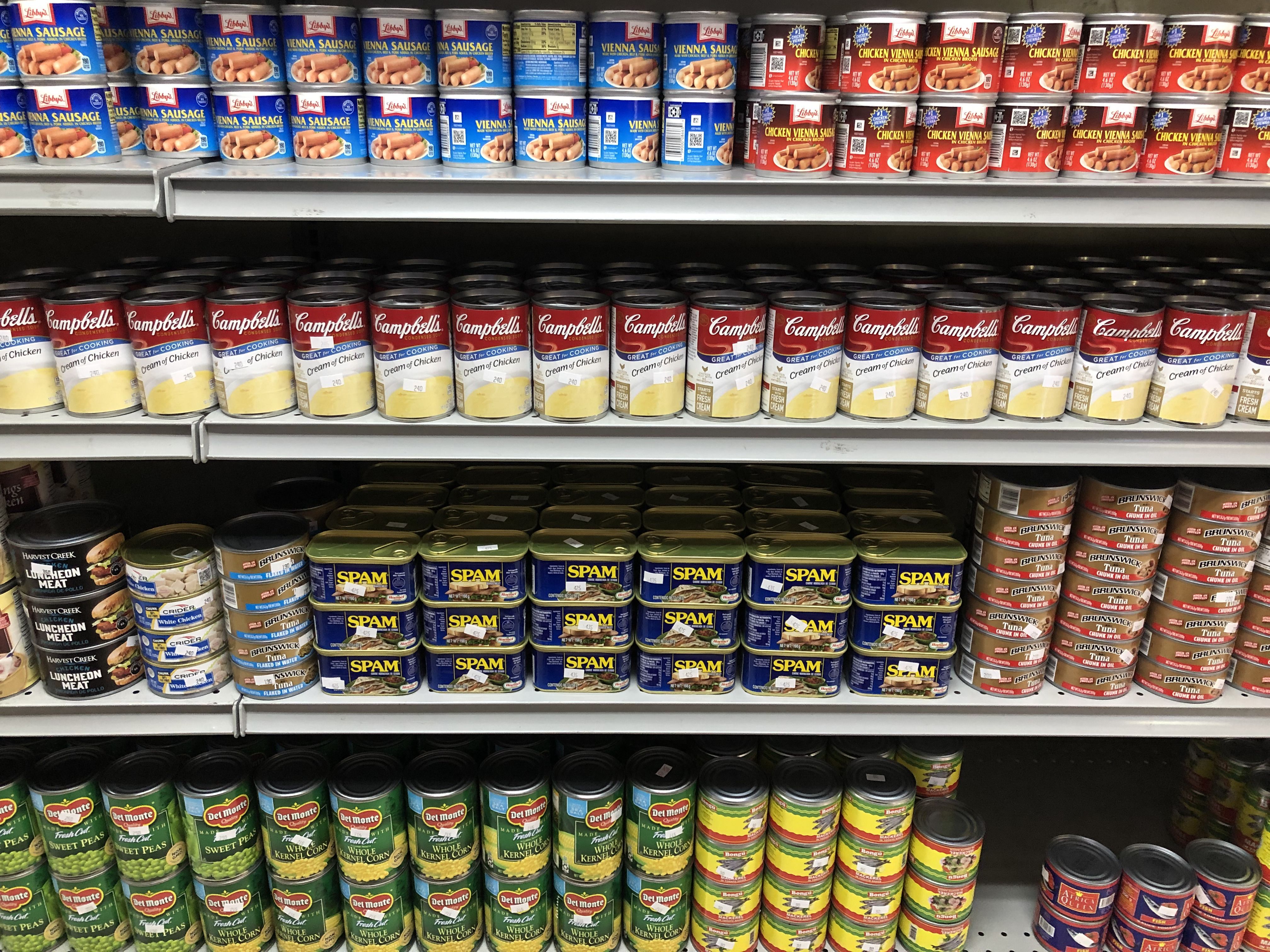
Imported American products fill the shelves of a supermarket.
Imported American products fill the shelves of a supermarket.
“It’s really one of the obstacles to the development of Haiti. … We kill our local economy to the profit of importation,” Jocelyn said. “One of the things to really help Haiti take the path of sustainability or development is to encourage [the] local economy. When you invest in-country, you empower the agriculturists. You encourage them to produce more.”
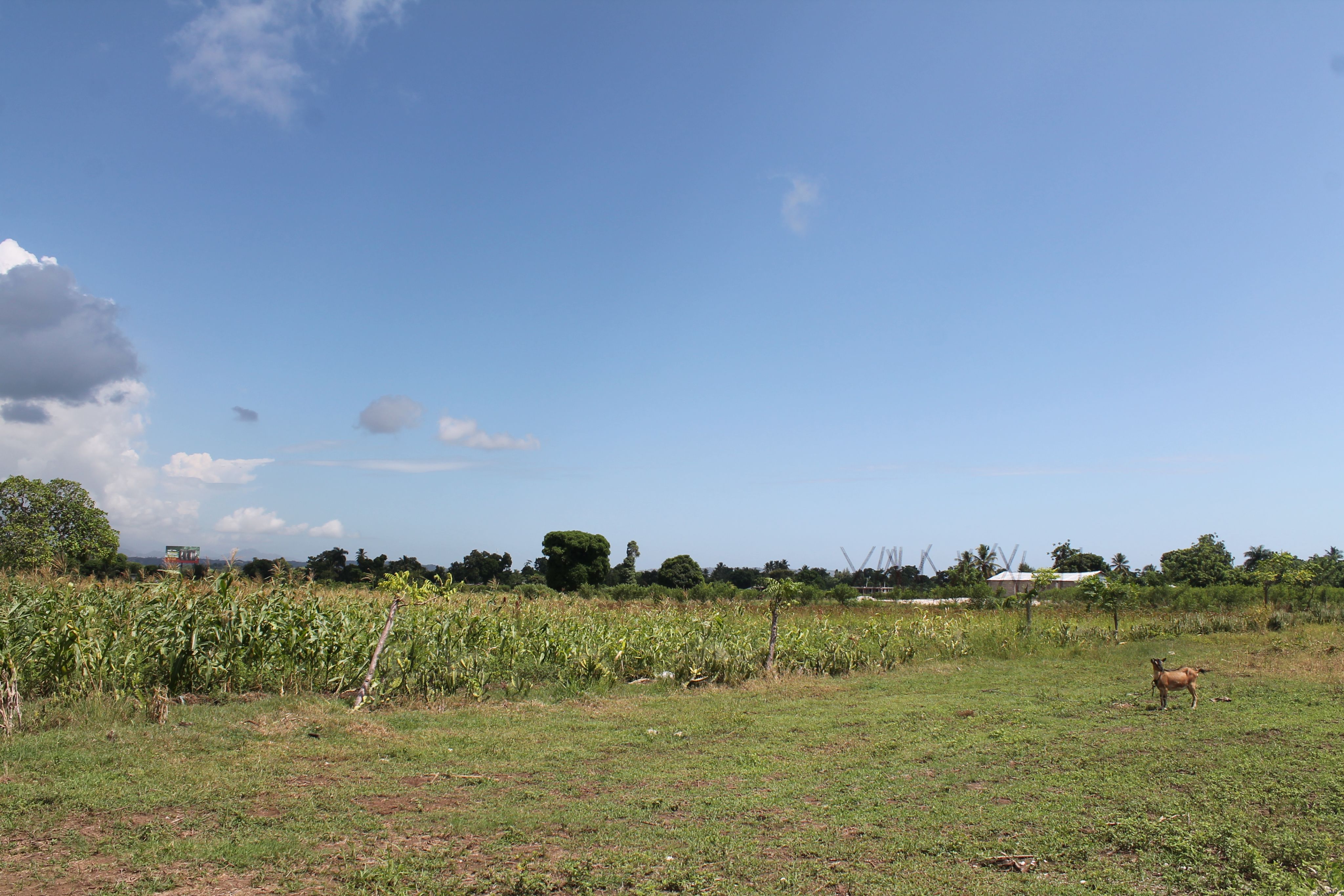
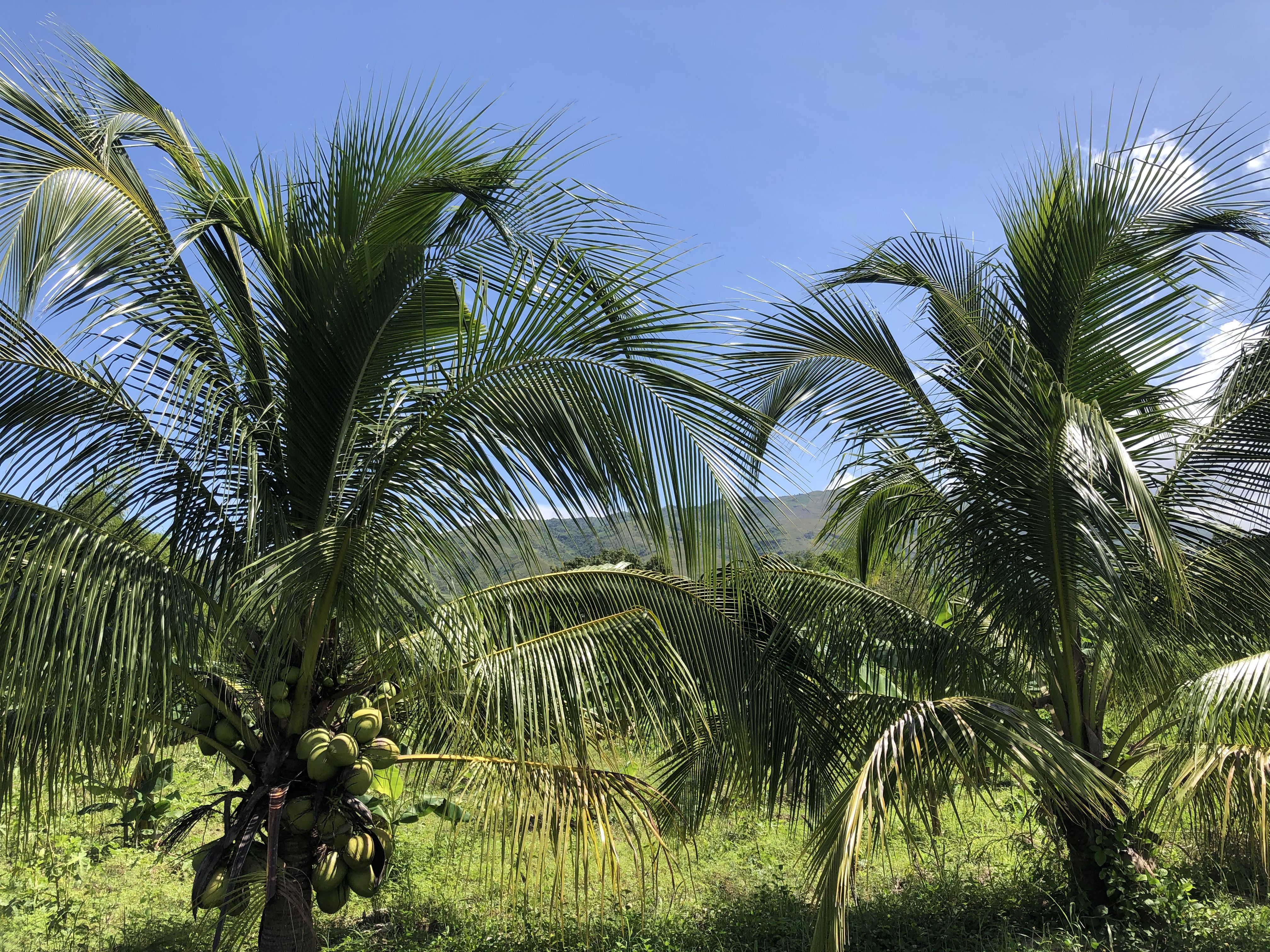
Good intentions stymied by insecurity
After the August earthquake, Jocelyn said, Hope for Haiti tried to source as much of its food supply from local farmers as possible. The organization buys from farmers in quantities as little as 30 liters — or, in a local unit of measurement, 10 mamits.
“We purchased local rice, local beans from farmers in southern Haiti because we want to invest. We want this money to go in the hands of the farmers,” Jocelyn said. “It makes our work more difficult. It would be easier to get imported food.”
But even with the best of intentions, Hope for Haiti can’t always get the quantity of each product that it needs, Jocelyn said. The organization is forced to source from abroad to fill the gaps.
This problem is seen over and over at organizations trying to support the local Haitian food system. The World Food Programme maintains pre-positioned food supplies to be quickly distributed when natural disasters strike, with Haiti routinely experiencing both earthquakes and hurricanes.
But storage regulations make it difficult for locally grown crops to meet the standards required for WFP to purchase them for its stockpiles, said Marc-André Prost, WFP Haiti deputy country director.
Transportation logistics are also a constant headache. Roads across the country are full of potholes, and many are unpaved altogether. An alternate route to the southern peninsula that traverses a mountain ridge outside Port-au-Prince presents road conditions all but impossible to navigate for large trucks filled with supplies.
“The problem is not the earthquake itself; the problem is more insecurity. This is what is affecting us most. When the Martissant road is blocked, we can’t pass. We can’t go to the south of the country,” Prost said. “What we did to remedy to that situation is to ensure we have good logistics capacity in place, and a plan B and a plan C.”
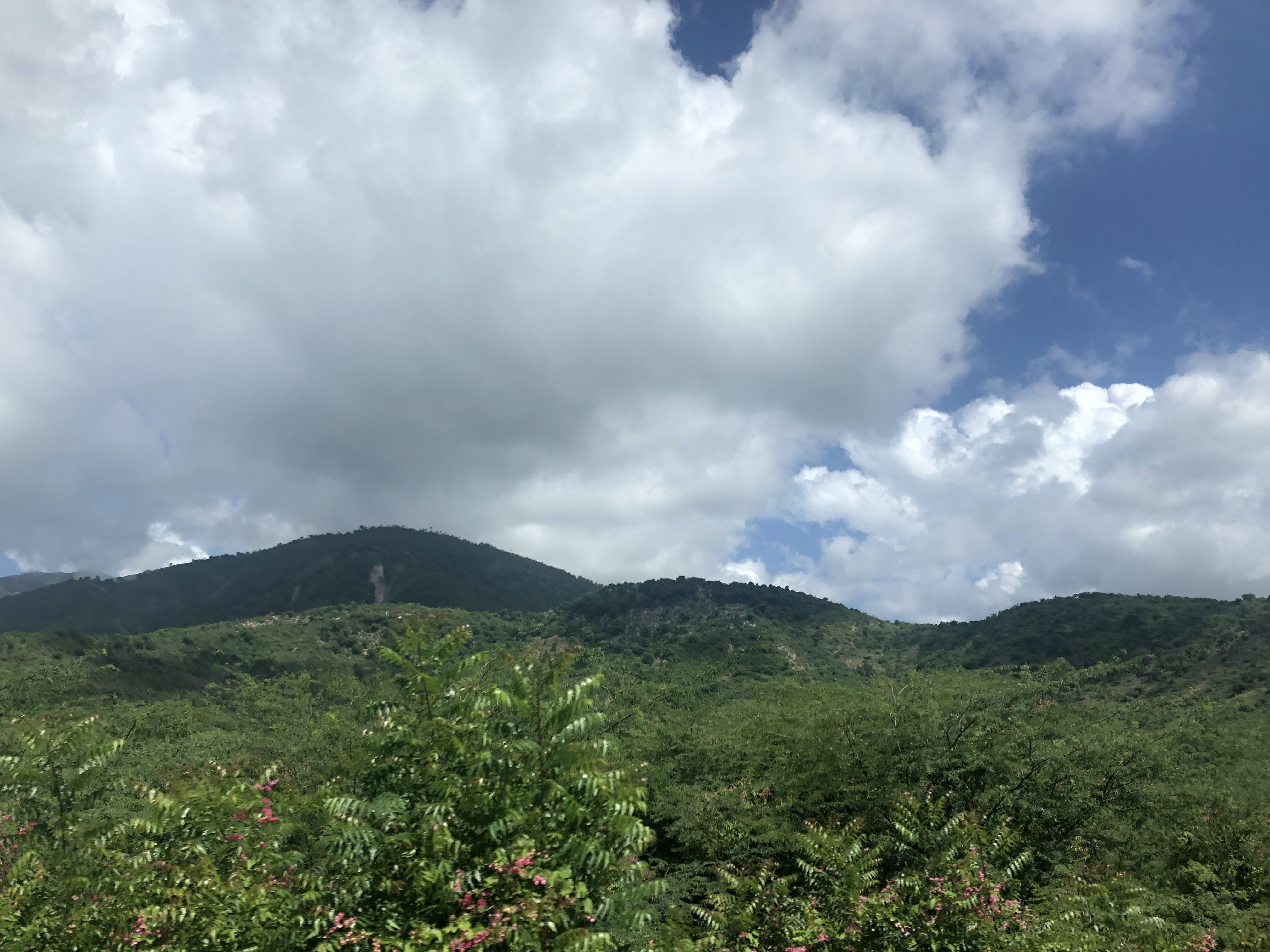
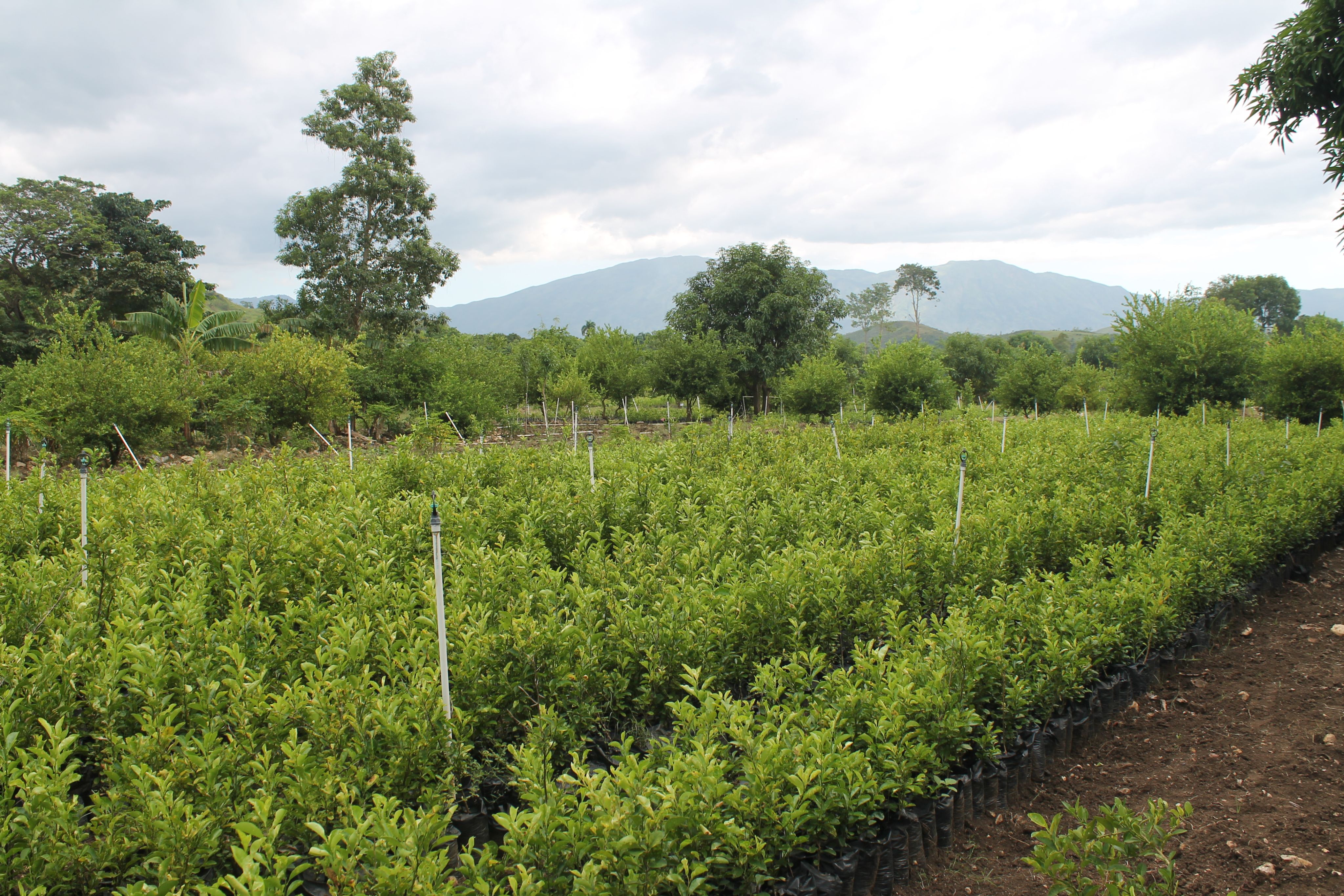

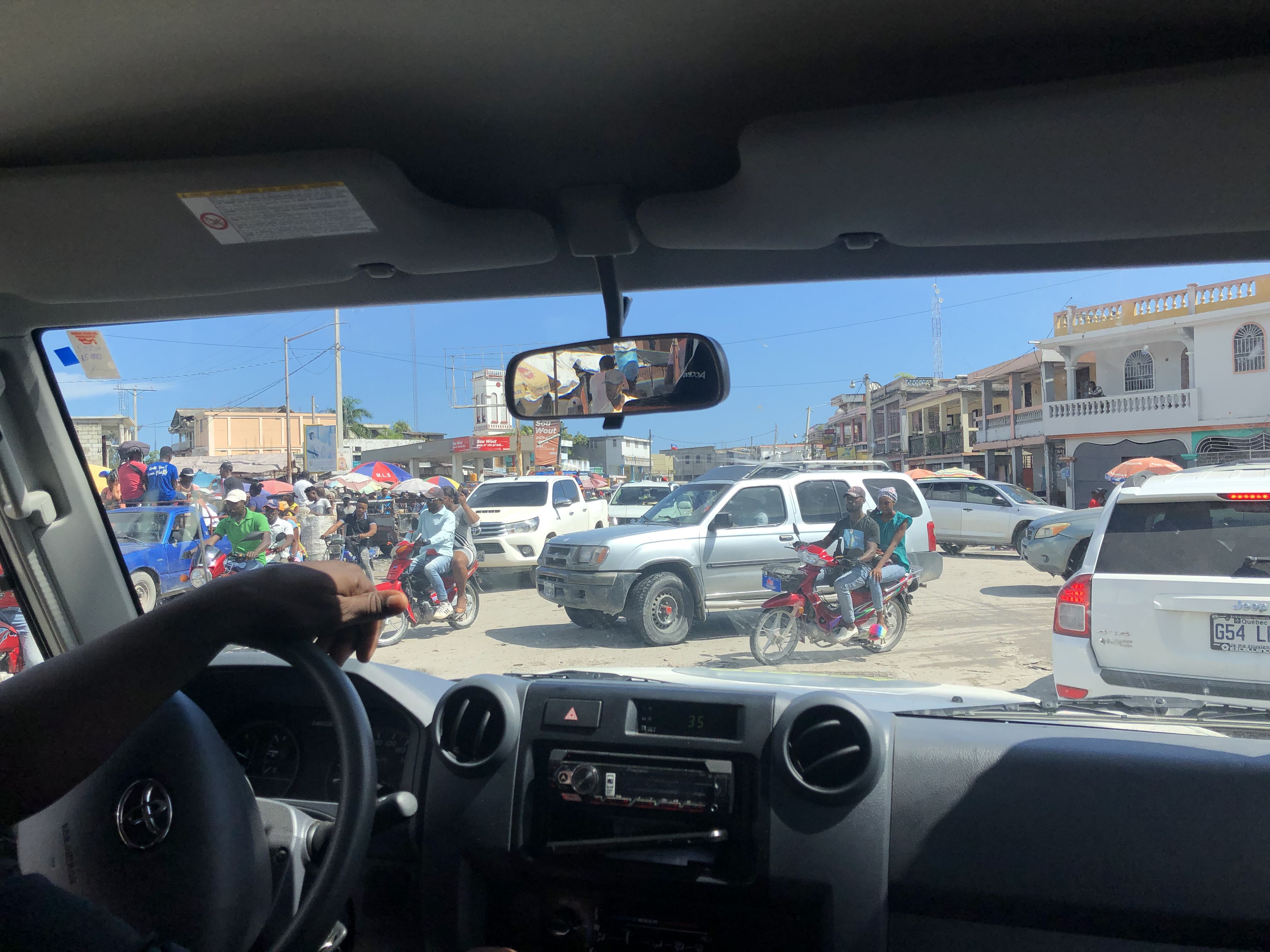
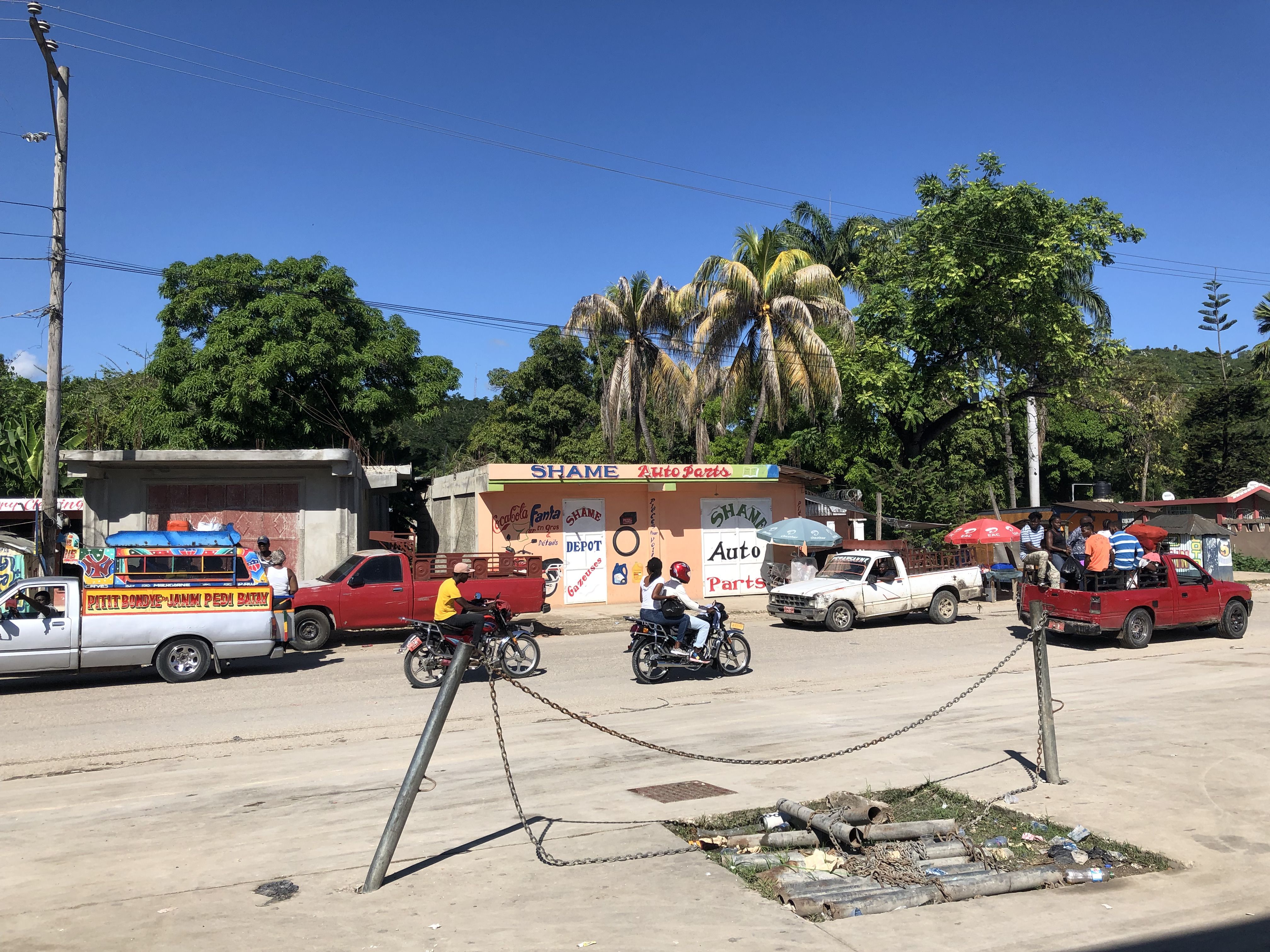

Haitians crowd the rare gas station that has supply to sell.
Haitians crowd the rare gas station that has supply to sell.

Poor infrastructure often causes traffic jams across Haiti.
Poor infrastructure often causes traffic jams across Haiti.

Roadblocks due to insecurity lengthen the time it takes to reach earthquake-affected areas.
Roadblocks due to insecurity lengthen the time it takes to reach earthquake-affected areas.
That includes road transport using security escorts, as well as sending items via barge or plane when needed, Prost said. Organizations routinely seeking passage through Martissant and other dangerous areas must negotiate with gangs that kidnapped 17 American and Canadian missionaries earlier this month and demanded $1 million each for their release.
Fuel shortages have further complicated logistics, with many gas stations along main highways closed altogether. Those that do have gas are often mobbed by drivers desperate to fill their tanks.
Even during periods without a disaster, citizens often can’t access what they need from local markets due to spikes in gang violence, which prevent them from feeling safe leaving home. The insecurity can also prevent farmers from getting crops to markets when they are open and makes planning for planting cycles a challenge if they don’t know what can be sold from a harvest before it goes bad.
"When you invest in-country, you empower the agriculturists. You encourage them to produce more."
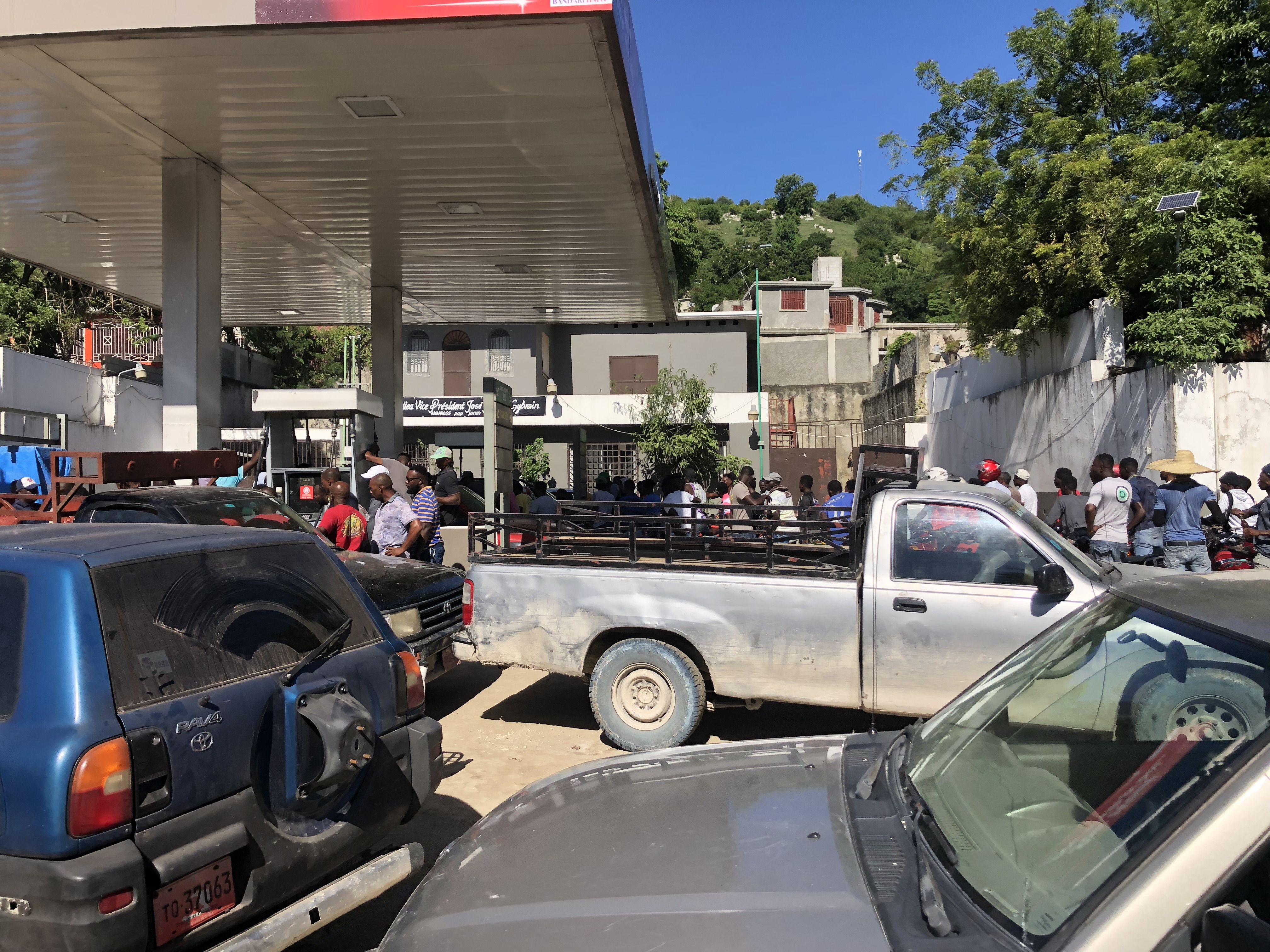
The struggle to support the local economy
WFP works to support local markets whenever possible and transitions to cash assistance after disasters so people can buy what they need most. This isn’t always plausible, Prost said, because wiped-out infrastructure can prevent markets from functioning.
“Obviously, if … [items] could be locally bought, that would be better. But we know there is an issue with quality, which would be much more complicated to match,” he said. “We’re trying as much as possible. … There’s a lot of hurdles when it comes to local purchase, and we have to be realistic.”
Farmers in Haiti lack support, with virtually no access to agricultural extension services that could improve their yields to both better feed the population and boost their incomes. They cannot produce enough to meet domestic consumption needs — even though 60% of Haitians participate in agriculture. Insufficient inputs and scant access to technical assistance for adapting practices to a changing climate, along with recurrent droughts, restrict both the quality and quantity of crops produced.
The cost difference between imports and local goods is stark: Imported rice costs between $600 and $900 per ton, while local rice can cost between $1,300 and $2,000 per ton, according to WFP.
“There’s a trade-off between how many people do you want to help and how do you want to help them,” Prost said.
Haiti’s systemic supply chain issues present challenges regularly for agribusiness Acceso, which provides a guaranteed market to its clients for their harvests. The company is constantly navigating security and transportation issues, according to Chief Operating Officer Robert Johnson, and Acceso believed it could contribute its expertise to both local and international organizations providing emergency food assistance after the August earthquake.
“Haiti’s stronger with an interconnected network of partners, and unfortunately the government doesn’t provide that kind of connector. And I think that’s what makes relief and recovery so hard,” Johnson said. “One of the big learnings of the last earthquake is there wasn’t enough investment in local organizations. … We have to help create those conduits, whether it's to us or to others, so that there’s the comfortability. And I think now is the time to work on that.”
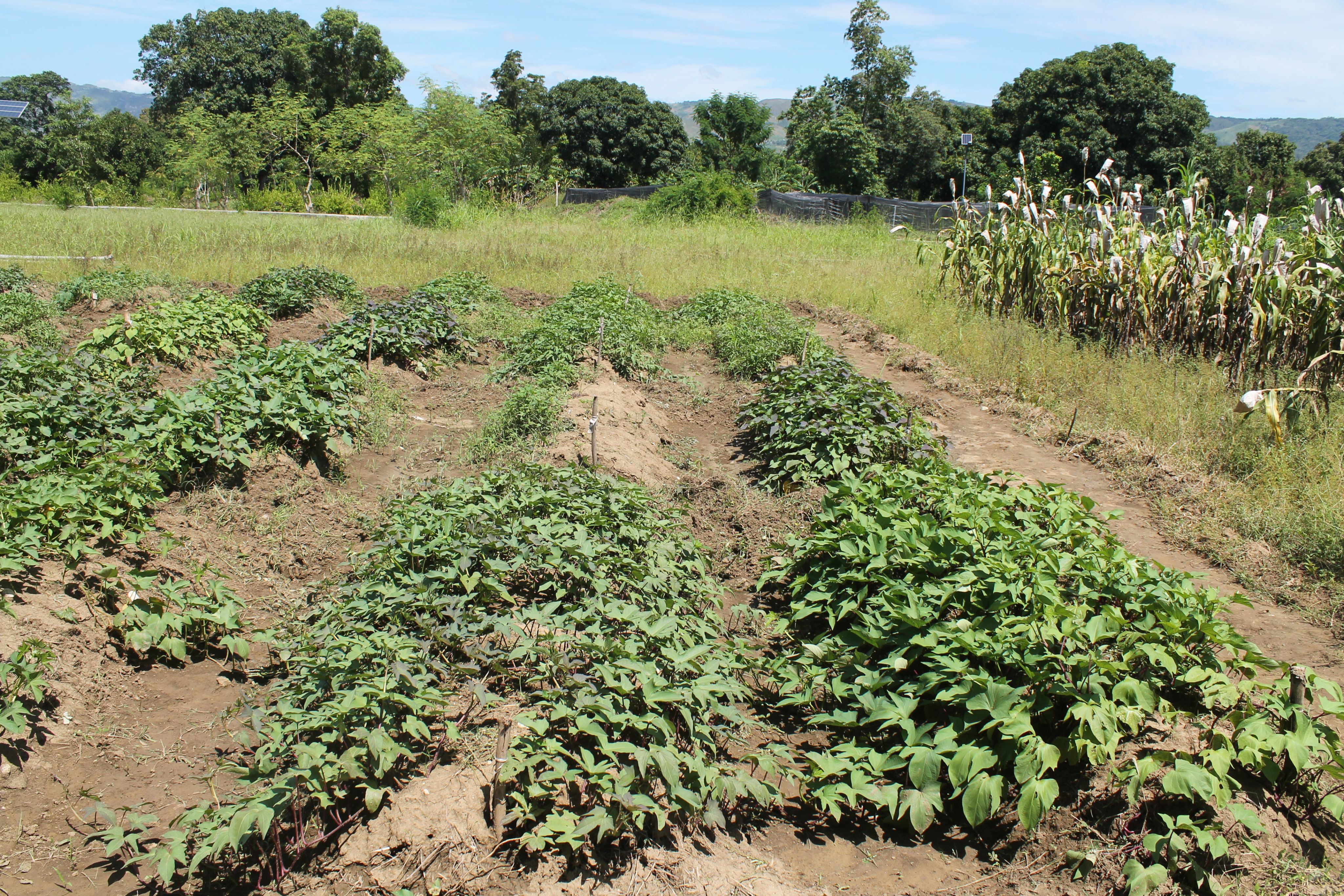
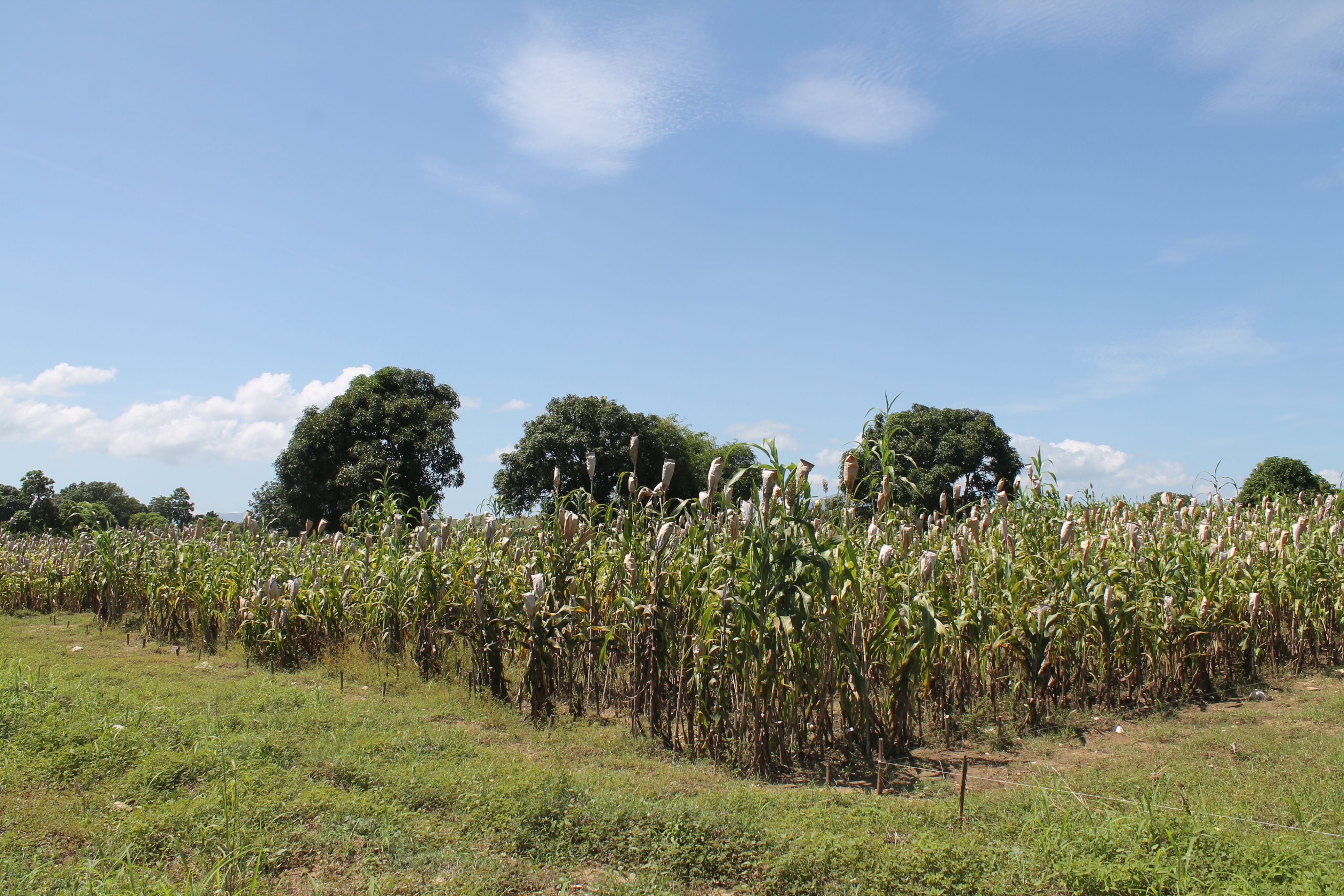
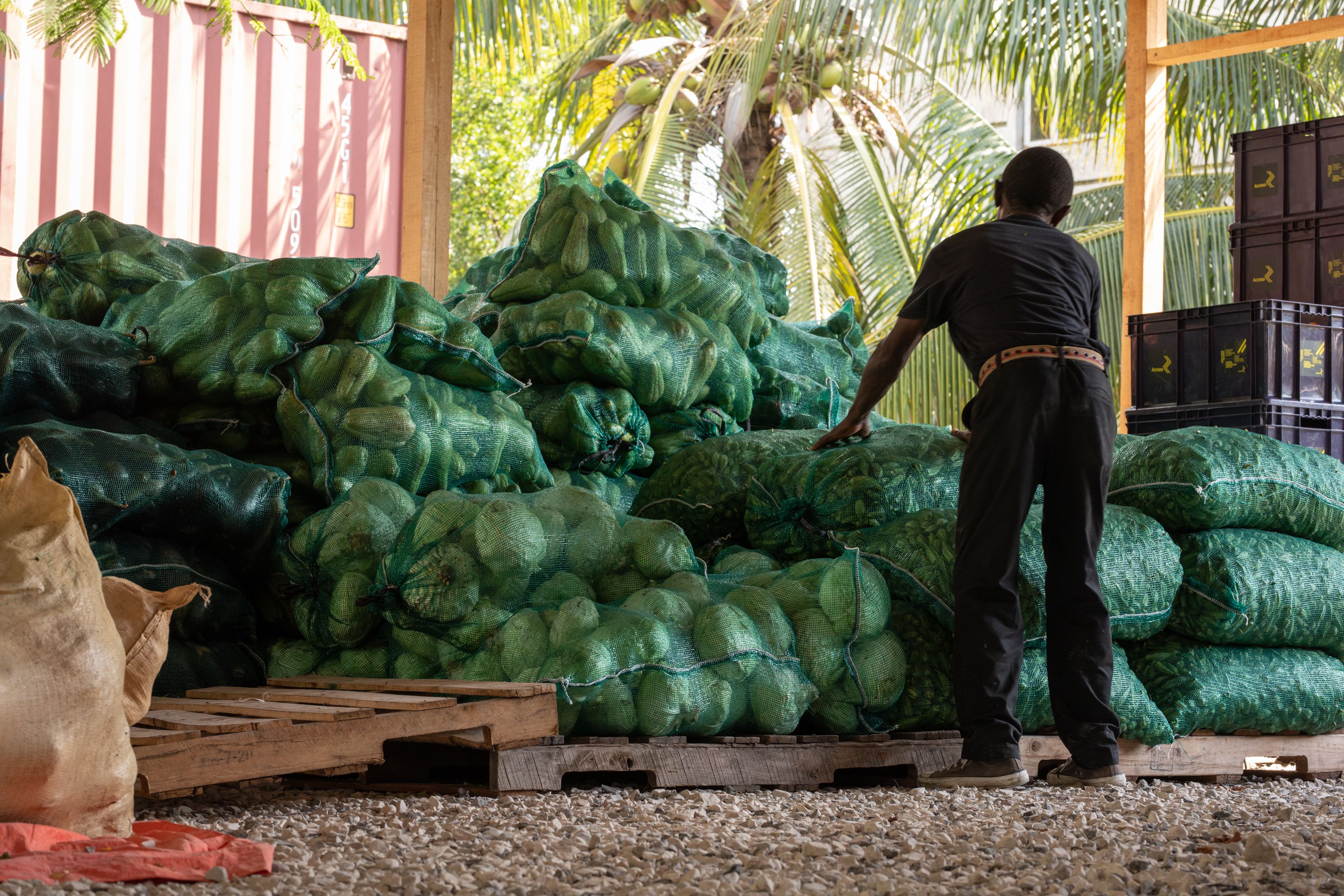
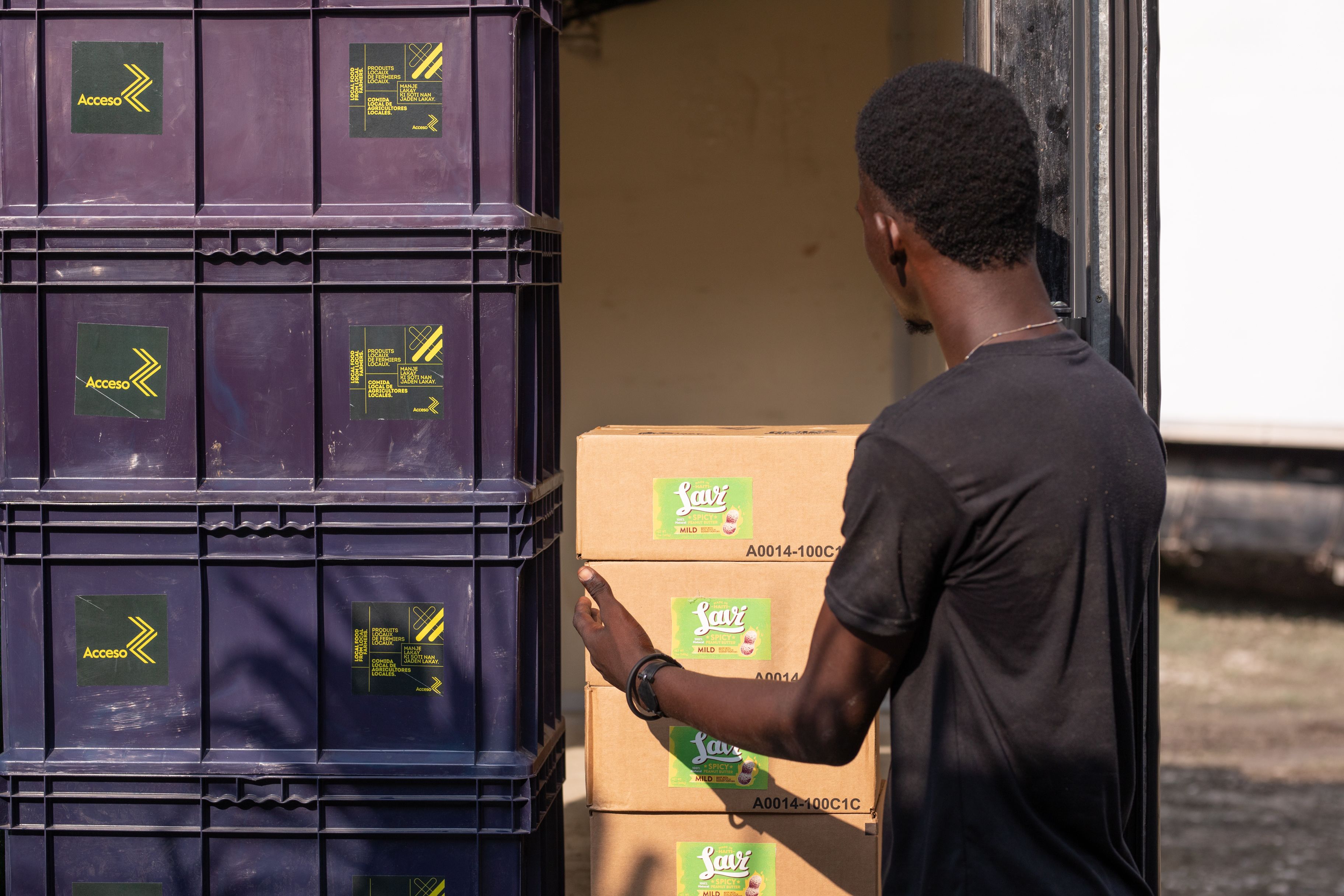

Fresh produce is loaded to transport to earthquake victims. Photo by: Ayasha Media / Acceso
Fresh produce is loaded to transport to earthquake victims. Photo by: Ayasha Media / Acceso

Acceso sent its locally produced peanut butter to feed earthquake victims. Photo by: Ayasha Media / Acceso
Acceso sent its locally produced peanut butter to feed earthquake victims. Photo by: Ayasha Media / Acceso
The most recent disaster has brought some progress: One of Acceso’s partners is the Association of Environmental Managers, or ACAPE — an abbreviation for its name in French — which is a local organization with a facility outside Les Cayes that aims to provide comprehensive community services to improve health.
Director Jean Raymond Délinois said ACAPE received fresh produce, as well as Acceso’s domestically made peanut butter, and fed more than 1,000 people in need. The two organizations had never worked together before, but Délinois said ACAPE is interested in exploring further partnerships with the company to strengthen the local food system.
Acceso is also working with the Port-au-Prince-based Centre Haïtien du Leadership et de L'Excellence, a leadership and training foundation that is starting a new local initiative to mobilize resources and “build a stronger community of partners that can reinforce the food system in Haiti,” according to Max-Prosper Fortuna, director of programs at CLE.
Local sourcing was also key for the operations of World Central Kitchen, an emergency feeding nonprofit founded by chef José Andrés that landed in Haiti after the earthquake. WCK partnered with Acceso to source ingredients from its supply chain for four kitchens located in disaster areas, distributing as many as 20,000 hot meals per day for weeks.
"There’s a trade-off between how many people do you want to help and how do you want to help them."
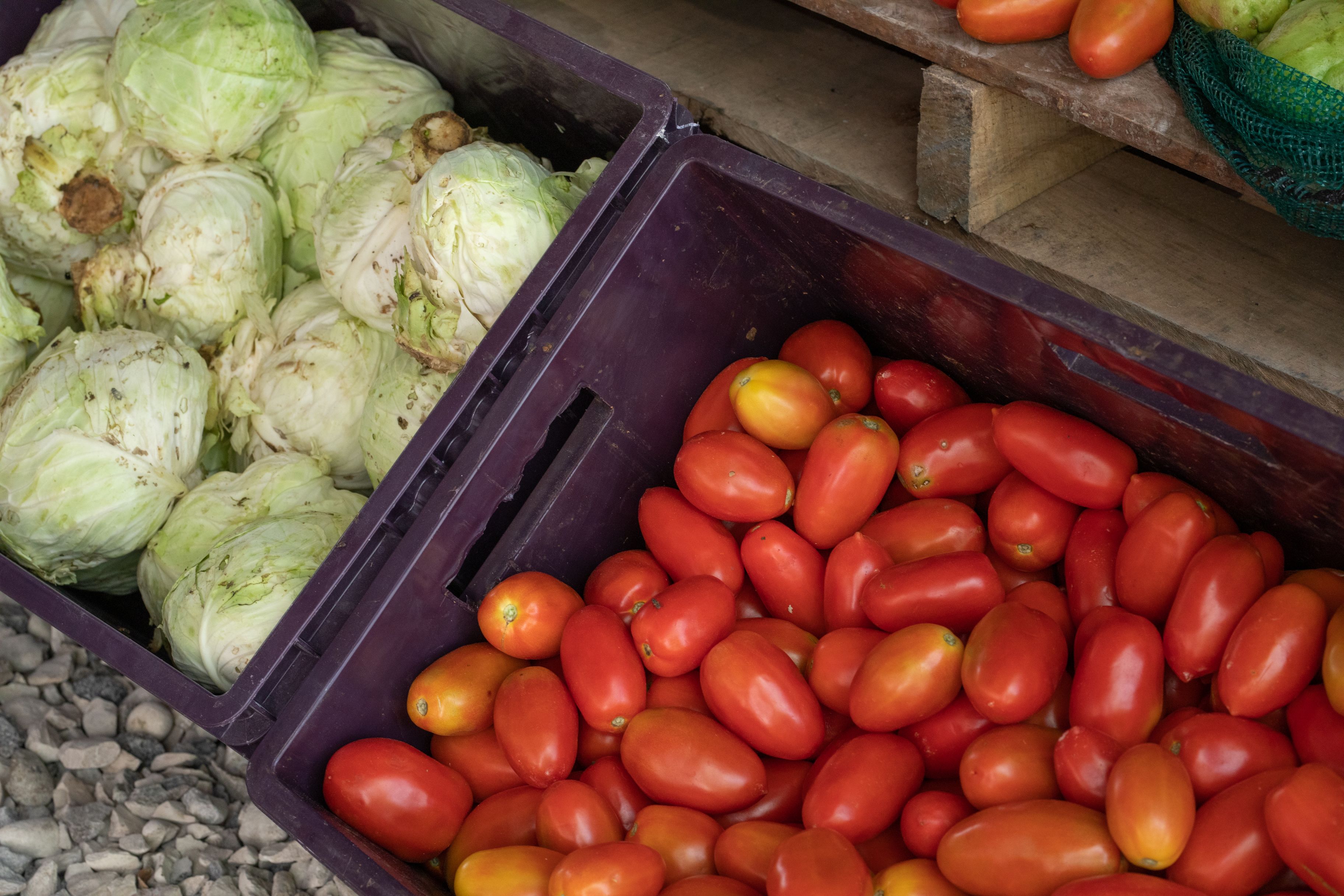
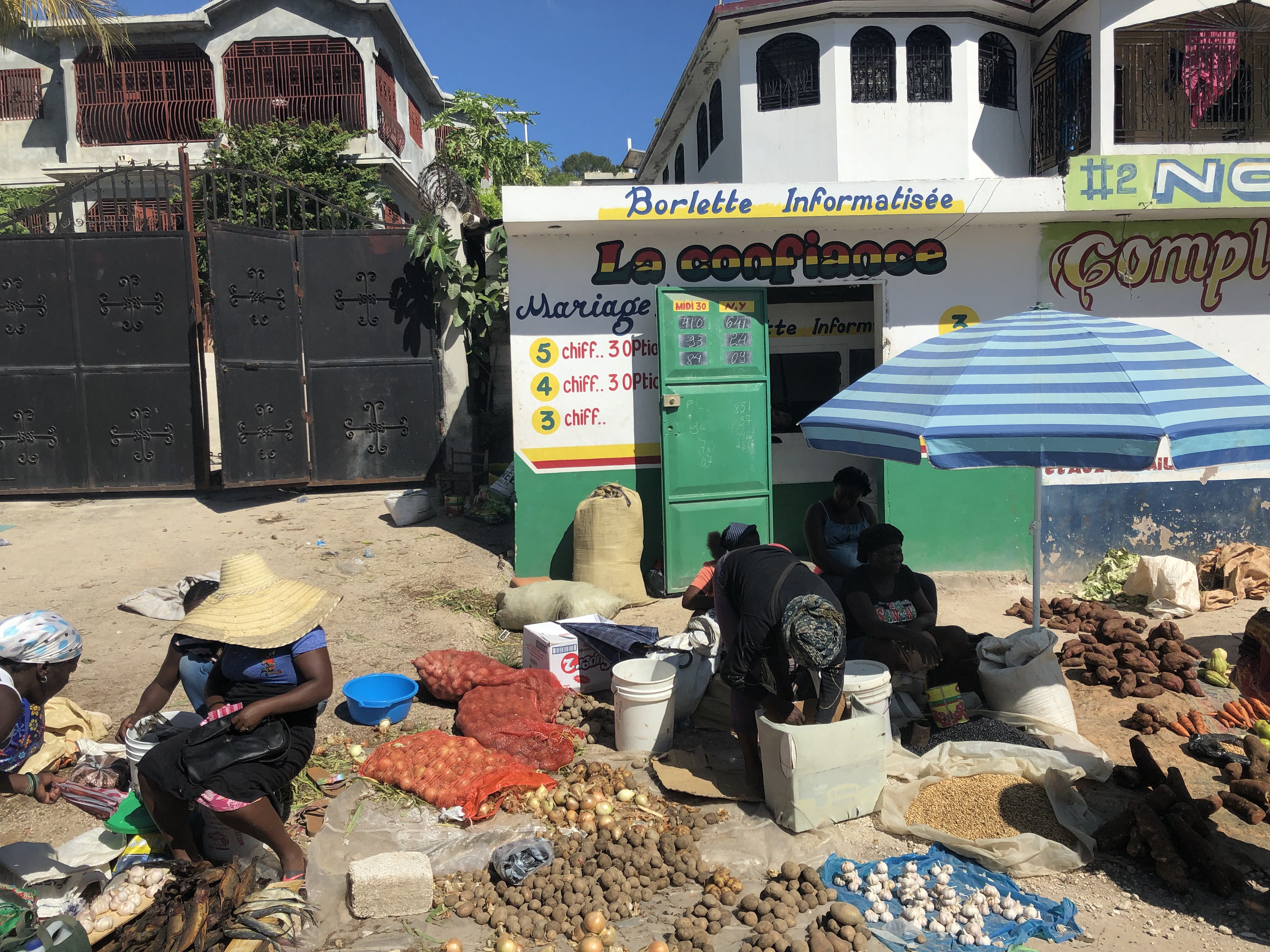
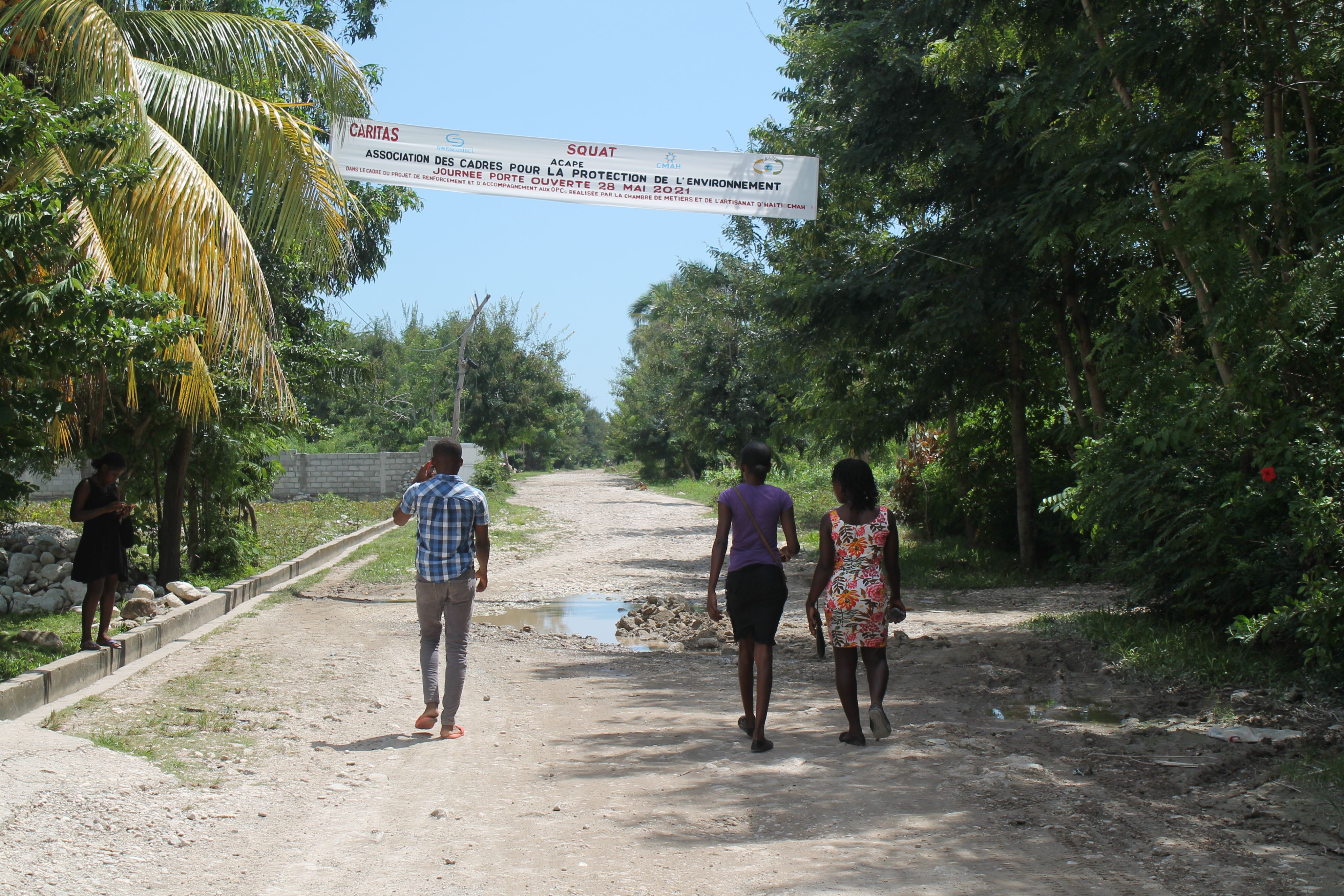
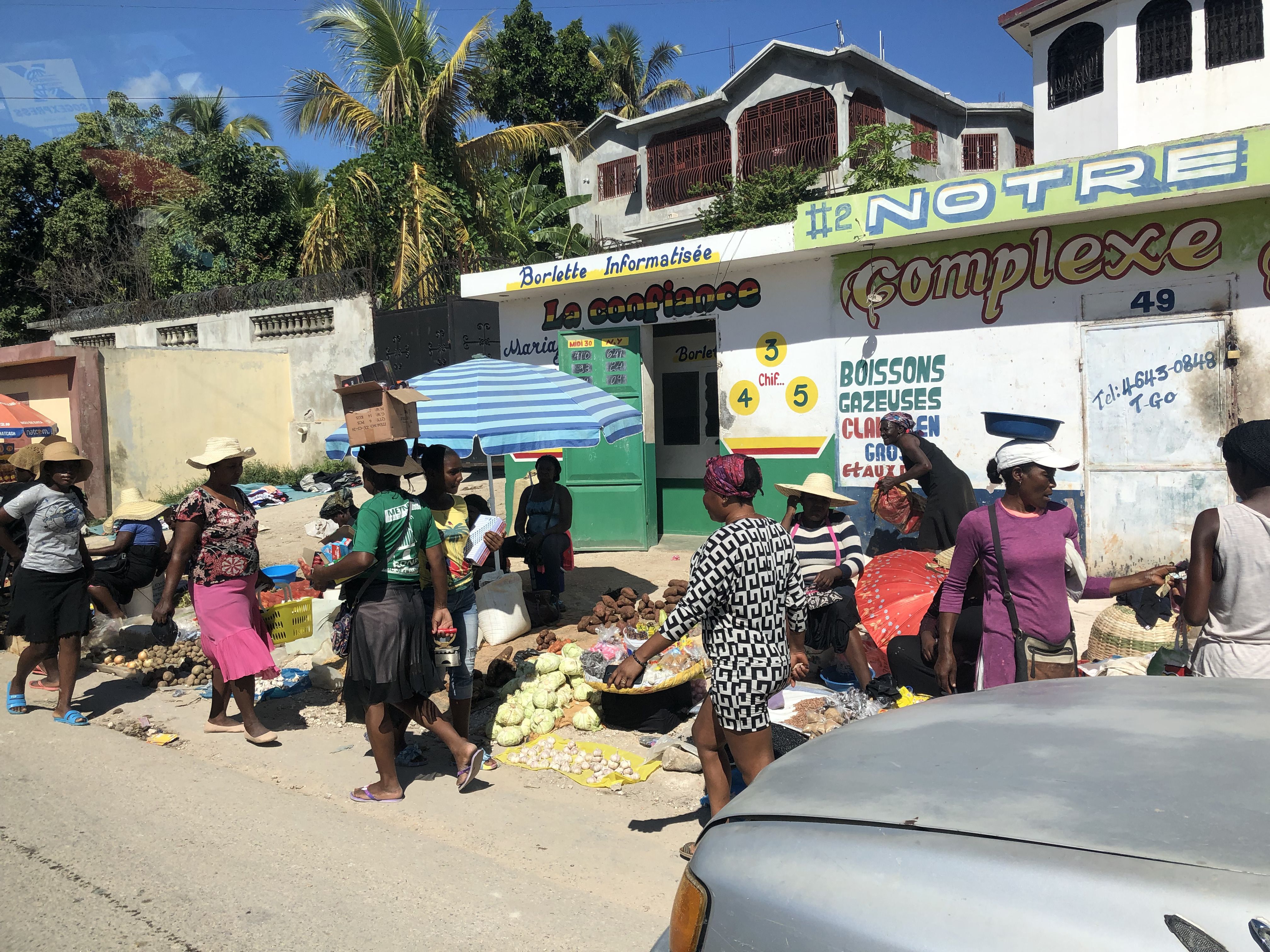

ACAPE aims to improve health in the community outside Les Cayes, including by increasing access to nutritious food.
ACAPE aims to improve health in the community outside Les Cayes, including by increasing access to nutritious food.

Vendors selling at an outdoor market.
Vendors selling at an outdoor market.
The two organizations had previously partnered on feeding efforts in Colombia but hadn’t before worked together in Haiti. Dylan Dugas, who ran logistics for WCK’s response after the earthquake, said the organization had several thousand pounds of fresh local produce coming in every three to four days that then needed to be transported to its kitchens.
The fate of Haiti’s broken food system is closely intertwined with the country’s political and security woes. But that doesn’t mean organizations shouldn’t actively try to build system capacity for more resilience in the future, Johnson said.
“Right now, the government is struggling to do the basics, struggling to provide stability and provide governance. … First and foremost, [we need] security and basic services, and then [we can] start thinking about investment. I think if those basic services are provided, if the roads are decent, if they’re secure, if electricity is there, people then can make smart business investments to fill those gaps,” he said.
“The reason why farms work in other countries is because they can just be farmers. … The more we can let farmers be farmers and take those things off their plate, you’re going to see increases in income and yield.”
The agribusiness Acceso facilitated Devex’s travel to Haiti. Devex retains full editorial control of all content.
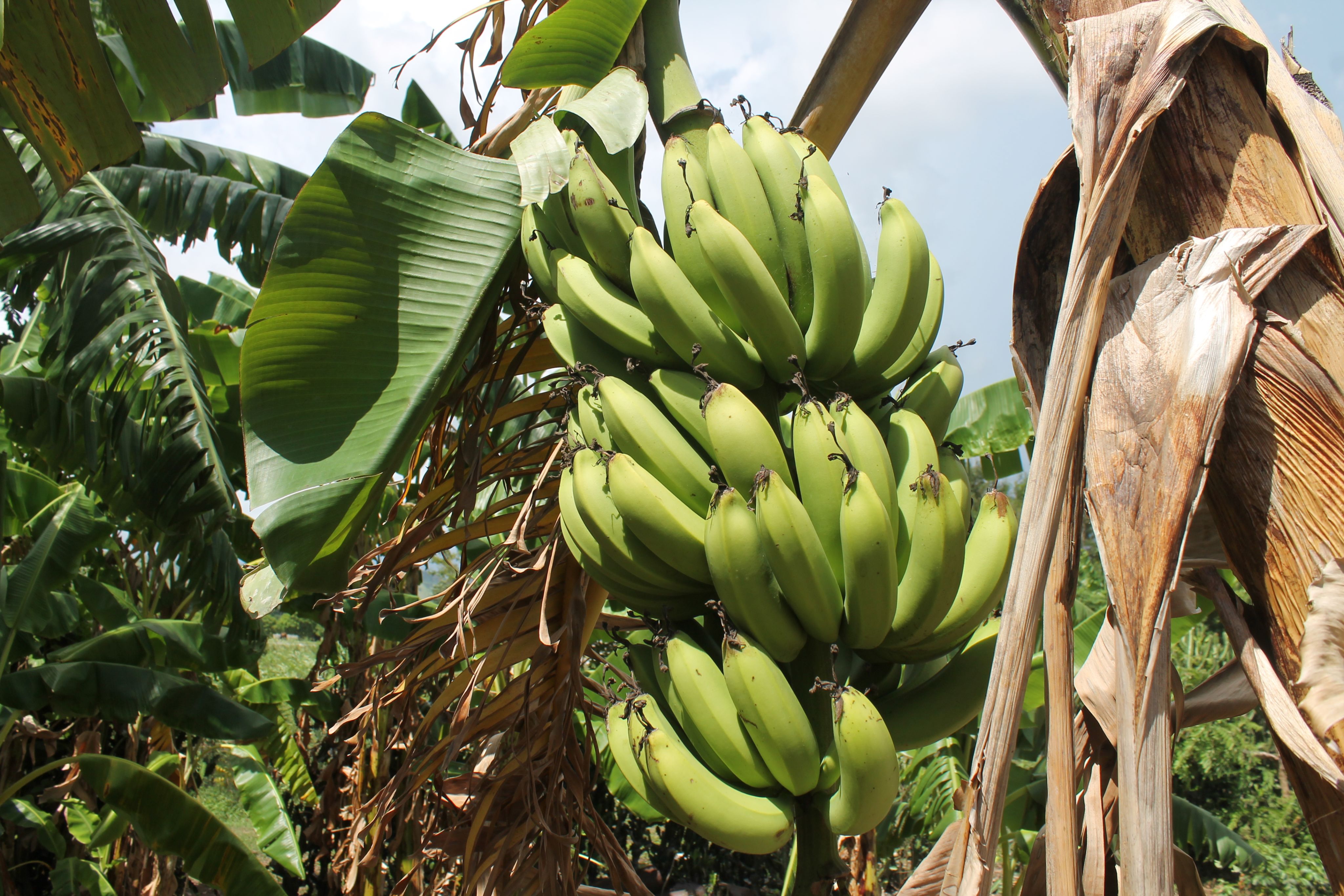
Photos by: Teresa Welsh / Ayasha Media / Acceso
Produced by: Janelle Cruz
Devex Dish
For the inside track on how agriculture, nutrition, sustainability, and more intersect to remake the global food system, sign up for Devex Dish, our latest newsletter.


